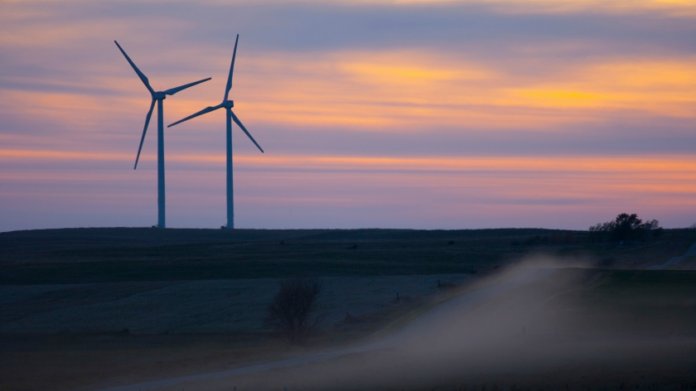BP’s wind energy business, through its wholly owned subsidiary Rolling Thunder I Power Partners LLC, has signed a purchase agreement to install a high-storage battery at its Titan 1 Wind Farm in South Dakota.
The pilot project is the first of its kind in BP’s U.S.-operated wind business, the company notes.
The 212 kW/840 kWh battery, supplied by Tesla, will be integrated with the wind farm and configured to help manage internal electricity demands of turbines when the wind isn’t blowing. By doing so, it will enable the wind farm to store electricity when the site is generating it and then have that electricity available to be consumed whenever needed, explains BP.
“The battery pilot project at our Titan 1 Wind Farm will provide BP Wind Energy valuable insights as we seek opportunities to use energy storage more effectively across our diverse portfolio,” says Laura Folse, chief executive of BP Wind Energy. “It’s another way that we’re working to create a wind energy business that is sustainable for the long term and supporting the broader transition to a low-carbon future.”
Situated on 7,500 acres in Hand County, the Titan 1 Wind Farm is wholly owned and operated by BP Wind Energy. The project has 10 turbines with the capacity to generate 25 MW of wind energy – enough to power about 6,700 average homes annually.
The battery storage project is expected to launch at the site during the second half of this year. Lessons from the project will enable BP to make better-informed decisions when evaluating and developing battery applications in the future, the company anticipates.
The project also supports BP’s broader strategy to invest half a billion dollars annually into low-carbon technologies, including projects within its established renewables portfolio, as well as in new low-carbon businesses. Specifically, BP will focus on five areas: advanced mobility, bio and low-carbon products, carbon management, power and storage, and digital.
“As a global energy business, BP is committed to addressing the dual challenge of meeting society’s need for more energy while, at the same time, working to reduce carbon emissions,” comments Dev Sanyal, BP’s CEO of alternative energy. “Projects like this one will be key in helping us get there and in playing our role in the global energy transition.”
In the U.S., BP directly operates 13 wind farms in Colorado, Idaho, Indiana, Kansas, Pennsylvania, South Dakota and Texas. It also holds an interest in a separate wind facility in Hawaii. The company’s U.S. wind farms have a gross generating capacity of 2,259 MW, which is enough electricity to power all of the homes in a city the size of Philadelphia.





“The project has 10 turbines with the capacity to generate 25 MW of wind energy – enough to power about 6,700 average homes annually.”
*** Gosh that’s only about 18 homes per day, or less than one home per hour! 😉
(hint: power is energy per unit time – power does not require an additional unit of time. Adding “per year” makes no sense. But they almost always say “per year” – why? What happens when the year is up?